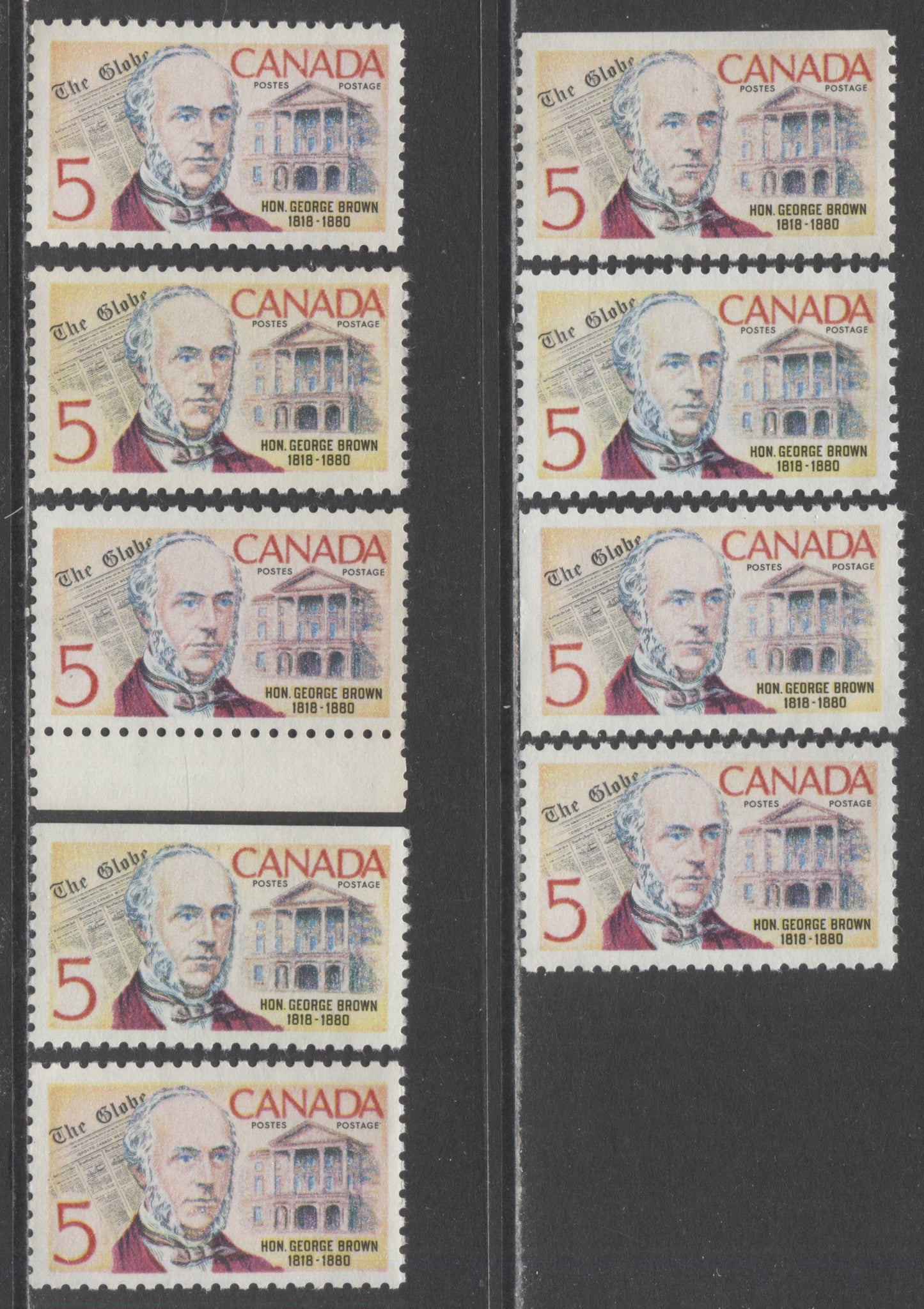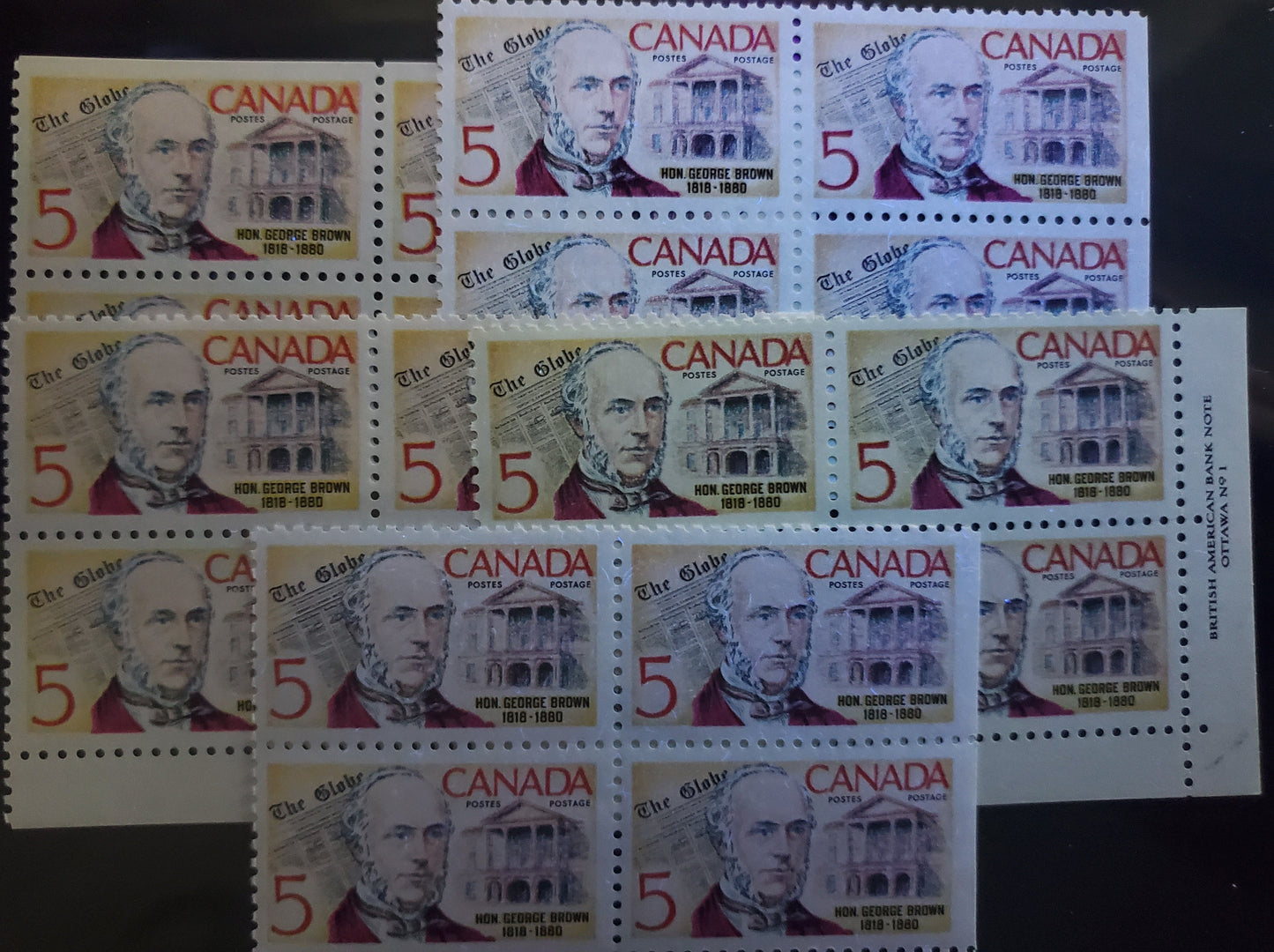Brixton Chrome
Canada #484 5c Multicolored George Brown, 1968 George Brown Issue, 9 VFNH Singles With DF-fl, NF-fl & DF Papers With Different Backgrounds
Canada #484 5c Multicolored George Brown, 1968 George Brown Issue, 9 VFNH Singles With DF-fl, NF-fl & DF Papers With Different Backgrounds
Couldn't load pickup availability
9 VFNH singles of the 5c multicolored George Brown from the 1968 George Brown Issue with DF-fl, NF-fl & DF papers with different backgrounds. The different colored backgrounds include yellow, peachy & pink, which come about because some of the magenta ink mixes with the yellow background ink to different degrees. When flecked, there are either just 1-2 fibers per stamp or a good number, being still a very sparse concentration of MF & HF fibers. The stamps include:
• DF-fl grayish, a few LF, MF or HF fibers, peachy background
• DF-fl grayish, very sparse MF & HF fibers, peachy background
• NF-fl gray, 1-2 MF & HF fibers, yellow background
• DF grayish, peachy background
• As above with pinkish background
• As above, yellow background
• DF ivory, peachy & yellow backgrounds
• As #3, but peachy background
Our estimate of the value is $10. The stamps offered here grade between 75 and 84 as follows:
Centering/Margins: 45/70, 50/70, 54/70
Paper Freshness: 5/5
Colour: 5/5
Impression: 5/5
Absence of Visible Paper Flaws: 5/5
Perforations: 10/10
This is the third of the experimental perf 10 issues printed by BABN. The paper is generally always DF or is very moderatey flecked with a few HF or HB fibres. Greyish and greyish white are the default colours under UV, with bright cream, ivory and deep NF violet grey being the uncommon types. The so-called fluorescent paper on the Curling issue is really not much brighter than other flecked examples of any of the other perf. 10 BABN issues like this issue, George Brown, or the Lacrosse stamp. My experience is that any fluorecent paper on these issues os much, much scarcer than the dull papers, easily by a margin of 20 to 1. So, I would disagree with Unitrade's classification of the dull paper being the better stamp on the 1969 Curling issue. I have done my best to capture these differences by taking pictures with my camera under UV light, but the differences can be harder to see than in real life. That should be borne in mind if you are looking at the scans and cannot tell the difference between them.
Share




